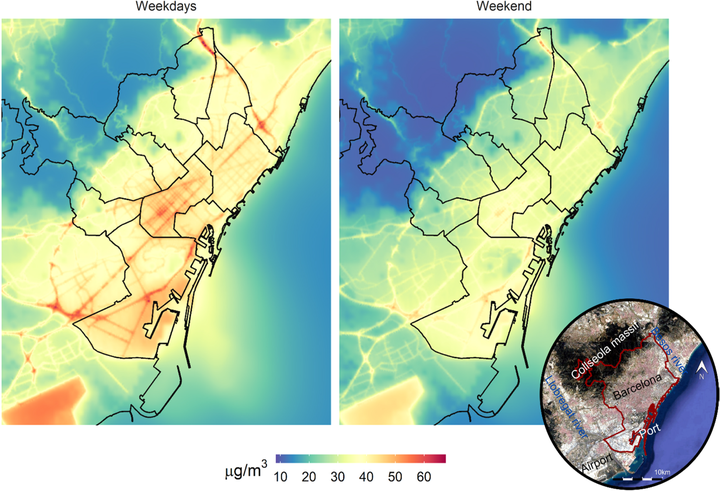Barcelona intense urban activity greatly limited the role of the atmosphere in driving NO2 concentration in 2018

Resumen
The World Health Organization defines an annual average threshold of 40 μg m−3 as the safe limit for human health. This threshold was clearly surpassed in 2018 in a large part of the Barcelona area during weekdays. In view of these data, it is of great interest to ascertain whether the impact of large-scale meteorological situations enables NO2 concentrations to be reduced to weekend levels and whether daily NO2 variability can be modulated by atmospheric variables. Results indicated that the main atmospheric patterns of the cold months in 2018 were unable to reduce NO2 concentration levels during weekdays to render them comparable with those of the weekend. Only one pattern, referring to higher wind speeds, was relatively similar to average weekend NO2 levels, although values did not descend to these levels. In addition, our study showed that changes in atmospheric conditions had almost no effect upon neighbourhoods presenting more consistently abundant daily NO2 emissions. Daily variability in NO2 therefore appears to be independent from large-scale meteorological changes.